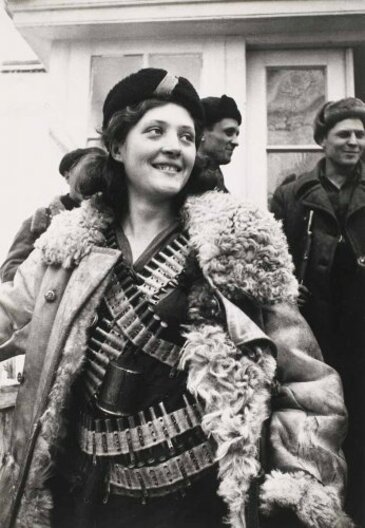Support from readers like you keeps The Journal open.
You are visiting us because we have something you value. Independent, unbiased news that tells the truth. Advertising revenue goes some way to support our mission, but this year it has not been enough.
If you've seen value in our reporting, please contribute what you can, so we can continue to produce accurate and meaningful journalism. For everyone who needs it.























 Source: Josiah Barnes/Courtesy of Brooklyn Museum" title="">
Source: Josiah Barnes/Courtesy of Brooklyn Museum" title=""> Source: Max Alpert/Courtesy of Brooklyn Museum" title="">
Source: Max Alpert/Courtesy of Brooklyn Museum" title=""> Source: Max Alpert/Courtesy of Brooklyn Museum" title="">
Source: Max Alpert/Courtesy of Brooklyn Museum" title=""> Source: Dmitri Baltermants/Courtesy of Brooklyn Museum" title="">
Source: Dmitri Baltermants/Courtesy of Brooklyn Museum" title=""> Source: Alfred Palmer/Courtesy of Brooklyn Museum" title="">
Source: Alfred Palmer/Courtesy of Brooklyn Museum" title=""> Source: Cecil Beaton/Courtesy of Brooklyn Museum" title="">
Source: Cecil Beaton/Courtesy of Brooklyn Museum" title=""> Source: Arkady Shaikhet/Courtesy of Brooklyn Museum" title="">
Source: Arkady Shaikhet/Courtesy of Brooklyn Museum" title=""> Source: Warrant Photographer Jess W. January/Courtesy of Brooklyn Museum Read more: http://www.businessinsider.com/war-photography-images-of-armed-conflict-and-its-aftermath-photos-2013-10?op=1#ixzz2s01oZkC6" title="">
Source: Warrant Photographer Jess W. January/Courtesy of Brooklyn Museum Read more: http://www.businessinsider.com/war-photography-images-of-armed-conflict-and-its-aftermath-photos-2013-10?op=1#ixzz2s01oZkC6" title=""> Source: Joe Rosenthal/Courtesy of Brooklyn Museum" title="">
Source: Joe Rosenthal/Courtesy of Brooklyn Museum" title=""> Source: Henri Huet/Courtesy Of Brooklyn Museum" title="">
Source: Henri Huet/Courtesy Of Brooklyn Museum" title=""> Source: Marc Riboud/Courtesy of Brooklyn Museum" title="">
Source: Marc Riboud/Courtesy of Brooklyn Museum" title=""> Source: Philip Jones Griffiths/Courtesy of Brooklyn Museum" title="">
Source: Philip Jones Griffiths/Courtesy of Brooklyn Museum" title=""> Source: Thomas Hoepker/Courtesy of Brooklyn Museum" title="">
Source: Thomas Hoepker/Courtesy of Brooklyn Museum" title=""> Source: Micha Bar-Am/Courtesy of Brooklyn Museum" title="">
Source: Micha Bar-Am/Courtesy of Brooklyn Museum" title=""> Source: Susan Meiselas/Courtesy of Brooklyn Museum" title="">
Source: Susan Meiselas/Courtesy of Brooklyn Museum" title=""> Source: Nhem Ein" title="">
Source: Nhem Ein" title=""> Source: Joel Sternfeld/Courtesy of Brooklyn Museum" title="">
Source: Joel Sternfeld/Courtesy of Brooklyn Museum" title=""> Source: Jan Grarup/Courtesy of Brooklyn Museum" title="">
Source: Jan Grarup/Courtesy of Brooklyn Museum" title=""> Source: Rachel Papo/Courtesy of Brooklyn Museum" title="">
Source: Rachel Papo/Courtesy of Brooklyn Museum" title=""> Source: Peter van Agtmael/Courtesy of Brooklyn Museum" title="">
Source: Peter van Agtmael/Courtesy of Brooklyn Museum" title=""> Source: Louie Palu/Courtesy of Brooklyn Museum" title="">
Source: Louie Palu/Courtesy of Brooklyn Museum" title=""> Source: Walter Astrada/Courtesy of Brooklyn Museum" title="">
Source: Walter Astrada/Courtesy of Brooklyn Museum" title="">











have your say